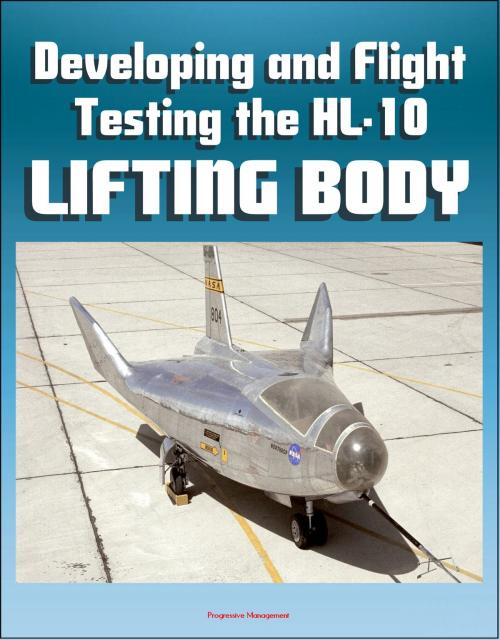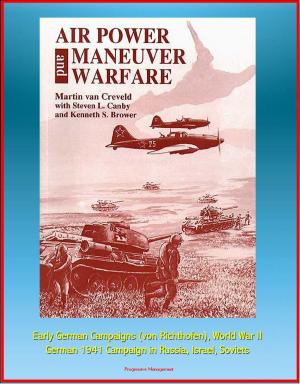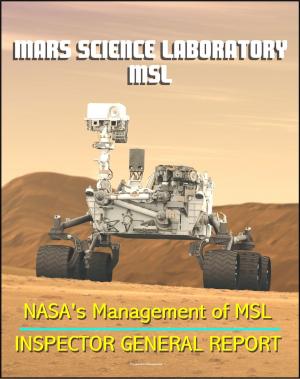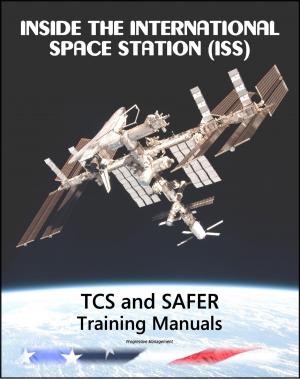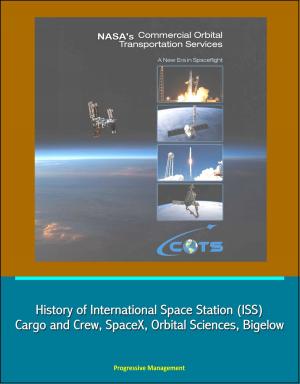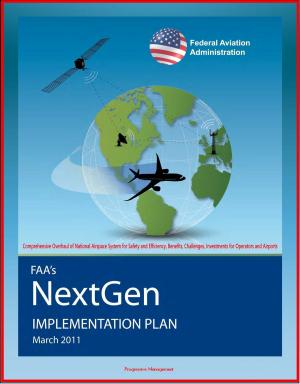Developing and Flight Testing the HL-10 Lifting Body: A Precursor to the Space Shuttle - NASA M2-F2, First Supersonic Flight, Future and Legacy, Accomplishments and Lessons
Nonfiction, Science & Nature, Technology, Aeronautics & Astronautics, Science, Physics, Astrophysics & Space Science| Author: | Progressive Management | ISBN: | 9781476393582 |
| Publisher: | Progressive Management | Publication: | July 23, 2012 |
| Imprint: | Smashwords Edition | Language: | English |
| Author: | Progressive Management |
| ISBN: | 9781476393582 |
| Publisher: | Progressive Management |
| Publication: | July 23, 2012 |
| Imprint: | Smashwords Edition |
| Language: | English |
This NASA history document - converted for accurate flowing-text e-book format reproduction - tells the exciting story of the HL-10 NASA lifting body. From the foreword: The story we want to tell is a bit unique. The story of the development and flight testing of a unique aerospace vehicle—the horizontal lander HL-10—is from our perspective as primary members of the flight test team at the NASA Flight Research Center (now NASA Dryden Flight Research Center). Mr. Kempel was with the program eight months before the first flight and continued through the final (37th) flight. Mr. Painter's association with the HL-10 began approximately three years before the first flight and continued through the final flight. Mr. Thompson flew the first lightweight and heavyweight M2 vehicles. The first heavyweight lifting-body flight, the M2-F2, took place on July 12, 1966, with Mr. Thompson at the controls. Others may be more qualified to relate the story of the birth of the HL-10; however, we have included a section that presents some insight that may not exist elsewhere. This section was compiled using some unpublished notes of Robert W. Rainey and Charles L. Ladson of NASA Langley Research Center. History written by those who did not participate in the events themselves may be inclined to be muted, and this may be the case with this section. Many unnamed pilots, engineers, technicians, mechanics, and support personnel made this program work. The successes of the HL-10 were the result of efforts of the entire team, real people. People made it work. The impressions of the flight operations are ours and we got some help from others who lived it too. We hope, after reading it, that you will also think it is a story worth telling.
The origins of the lifting-body idea are traced back to the mid-1950s, when the concept of a manned satellite reentering the Earth's atmosphere in the form of a wingless lifting body was first proposed. Interesting and unusual events in the flight testing are presented with a review of significant problems encountered in the first flight and how they were solved. Impressions by the pilots who flew the HL-10 are included. The HL-10 completed a successful 37-flight program, achieved the highest Mach number and altitude of this class vehicle, and contributed to the technology base used to develop the space shuttle and future generations of lifting bodies.
INTRODUCTION * Lifting-Body Concept * Brief Area Description and Some History * GETTING STARTED * CONFIGURING THE HL-10 * Concept and Early Configuration * Final Configuration * FLIGHT VEHICLE DESCRIPTION * FLIGHT VEHICLE MISSION * FLIGHT TEST PREPARATION * M2-F2 Team * HL-10 Team * FLIGHT TESTING * The Maiden Flight * Postflight Analysis * The Second Flight * Simulation of the HL-10 * The First Lifting-Body Powered Flight * The First Supersonic Lifting-Body Flight * The Fastest and the Highest * Flight-Determined Lift and Drag * The Best Flying of the Lifting Bodies * Piloting the HL-10 * Vehicle Dynamics, Control, and Turbulence Response * Training for and Flying Chase for Lifting-Body Missions * The Final Flights * Pilots Participating in the Program * THE FUTURE AND LEGACY OF LIFTING BODIES * SIGNIFICANT ACCOMPLISHMENTS AND LESSONS LEARNED * CONCLUDING REMARKS * REFERENCES * APPENDIX A * Glossary * APPENDIX B * The HL-10 Lifting-Body Team
This NASA history document - converted for accurate flowing-text e-book format reproduction - tells the exciting story of the HL-10 NASA lifting body. From the foreword: The story we want to tell is a bit unique. The story of the development and flight testing of a unique aerospace vehicle—the horizontal lander HL-10—is from our perspective as primary members of the flight test team at the NASA Flight Research Center (now NASA Dryden Flight Research Center). Mr. Kempel was with the program eight months before the first flight and continued through the final (37th) flight. Mr. Painter's association with the HL-10 began approximately three years before the first flight and continued through the final flight. Mr. Thompson flew the first lightweight and heavyweight M2 vehicles. The first heavyweight lifting-body flight, the M2-F2, took place on July 12, 1966, with Mr. Thompson at the controls. Others may be more qualified to relate the story of the birth of the HL-10; however, we have included a section that presents some insight that may not exist elsewhere. This section was compiled using some unpublished notes of Robert W. Rainey and Charles L. Ladson of NASA Langley Research Center. History written by those who did not participate in the events themselves may be inclined to be muted, and this may be the case with this section. Many unnamed pilots, engineers, technicians, mechanics, and support personnel made this program work. The successes of the HL-10 were the result of efforts of the entire team, real people. People made it work. The impressions of the flight operations are ours and we got some help from others who lived it too. We hope, after reading it, that you will also think it is a story worth telling.
The origins of the lifting-body idea are traced back to the mid-1950s, when the concept of a manned satellite reentering the Earth's atmosphere in the form of a wingless lifting body was first proposed. Interesting and unusual events in the flight testing are presented with a review of significant problems encountered in the first flight and how they were solved. Impressions by the pilots who flew the HL-10 are included. The HL-10 completed a successful 37-flight program, achieved the highest Mach number and altitude of this class vehicle, and contributed to the technology base used to develop the space shuttle and future generations of lifting bodies.
INTRODUCTION * Lifting-Body Concept * Brief Area Description and Some History * GETTING STARTED * CONFIGURING THE HL-10 * Concept and Early Configuration * Final Configuration * FLIGHT VEHICLE DESCRIPTION * FLIGHT VEHICLE MISSION * FLIGHT TEST PREPARATION * M2-F2 Team * HL-10 Team * FLIGHT TESTING * The Maiden Flight * Postflight Analysis * The Second Flight * Simulation of the HL-10 * The First Lifting-Body Powered Flight * The First Supersonic Lifting-Body Flight * The Fastest and the Highest * Flight-Determined Lift and Drag * The Best Flying of the Lifting Bodies * Piloting the HL-10 * Vehicle Dynamics, Control, and Turbulence Response * Training for and Flying Chase for Lifting-Body Missions * The Final Flights * Pilots Participating in the Program * THE FUTURE AND LEGACY OF LIFTING BODIES * SIGNIFICANT ACCOMPLISHMENTS AND LESSONS LEARNED * CONCLUDING REMARKS * REFERENCES * APPENDIX A * Glossary * APPENDIX B * The HL-10 Lifting-Body Team
